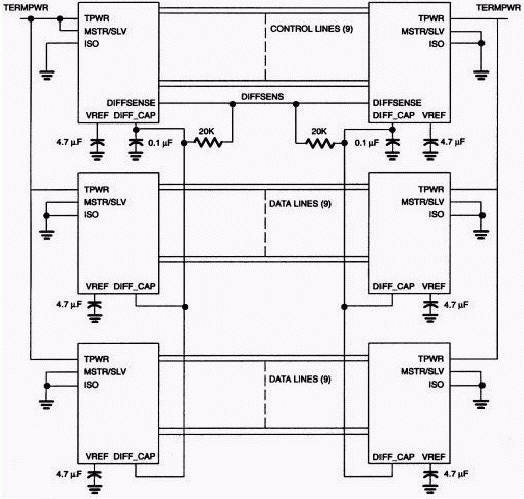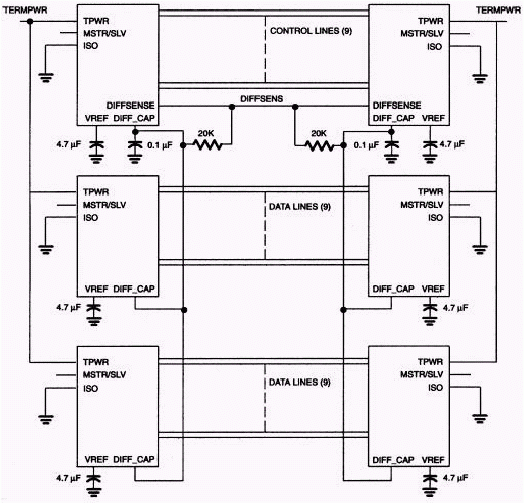

Figure 1. SCSI bus typical configuration.
Alternate ConfigurationInternal to these devices, there is a 75kΩ internal pullup between the TPWR and the MSTR/SLV lines. Figure 2A illustrates the existing internal pullup not shown in Figure 1 and not shown in the data sheets for the multimode and LVD-only devices. Because of the internal pullup, the MSTR/SLV line can be connected high, as shown in Figure 1, or it can be left floating, as shown in Figure 2A. Typically, users would connect the MSTR/SLV line high but this is optional and not a requirement.

Figure 2A. SCSI bus alternate configuration.

Figure 2B. SCSI bus alternate configuration.
From Figure 1, you see that only the device designated as the master is connected high (MSTR/SLV = 1). Only the master device is configured to drive the DIFFSENS line. Slave devices monitor the DIFFSENS line though DIFFCAP pin. In the typical configuration, the MSTR/SLV line is connected low for all slave devices. However, by leaving the MSTR/SLV line floating, as shown in Figure 2A, the effect is negligible because none of the slave devices drive the DIFFSENS line and therefore do not control the mode selection.
SummaryBecause of the internal pullup between the termpower voltage (TPWR) and the MSTR/SLV, the DS2117M, DS2118M, DS2119M, and the DS2120 devices can be configured as shown in Figure 1 or optionally as shown in Figure 2A without any difference in SCSI device operation.
欢迎分享,转载请注明来源:内存溢出

 微信扫一扫
微信扫一扫
 支付宝扫一扫
支付宝扫一扫
评论列表(0条)